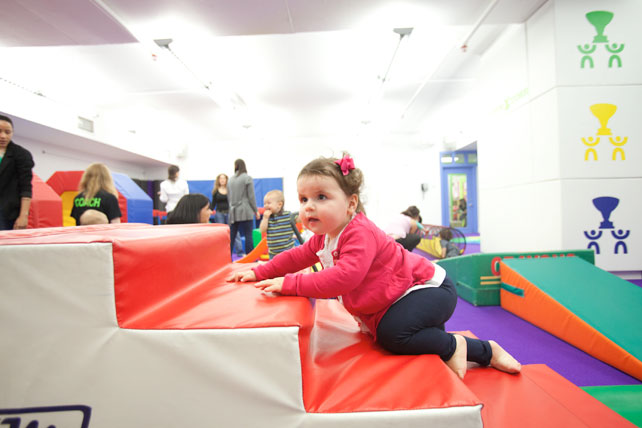Breaking Down Developmental Milestones

SHARED by: Melissa van Wijk, Director Tiny Tot Fitness
In the early months and years of a child’s life there is a large emphasis on meeting milestones. There is a sense of great joy when the big ones are accomplished (walking, the first word), while at other times a source of confusion or concern (does it matter if my child doesn’t crawl? What’s the pincer grasp anyway?). While there is a typical progression, children develop in different ways and at different rates. When it comes to development, normal is a range, not an absolute. Children develop in a range of areas including: gross motor, fine motor, speech, language, self-help/self-regulation, emotional/social and more. A child may be on track in some areas, while being on the early or late end of the spectrum in other areas, making it all the more confusing to understand where the child is developmentally.
To fully understand the importance of milestones, it’s helpful to consider that there are elements that go into accomplishing each milestone. It is oftentimes precisely those elements that are important for the long haul. Consider some of the elements that go into creeping and crawling:
- Developing muscle strength to elongate the spine; lack of this development may lead to lack of control over the neck and head or torticollis.
- Bearing weight on the palms of the hands; this development, or lack thereof, can affect object manipulation and fine motor skill development down the road.
- Developing cross lateral movement patterns (right arm/left leg move, then left leg/right arm); the cross lateral patterns are currently thought to further higher-level thinking down the road.
The same is true for other milestones: Visual tracking connects to reading from left to right later on. Protective reflexes affect walking. Finding the midline and clapping connect to crossing the midline later on.
It is hard to teach milestones per se, but if you know more about the building blocks that go into accomplishing a milestone, it is easier to engage with your child in ways that may help keep their development on track by doing simple activities. Bubbles are great for visual tracking. Anyone who has been in the Tiny Tots Fitness classes knows that we do a few simple exercises on exercise balls to prompt infants to use their protective reflexes. Baby Sign Language reinforces the found midline. Making a child alternate feet when climbing up stairs aids in their cross lateral movement. And so on.
Before you know it you’ll see a lot more details about what your child is doing and you’ll be able to support their development in more meaningful ways.









